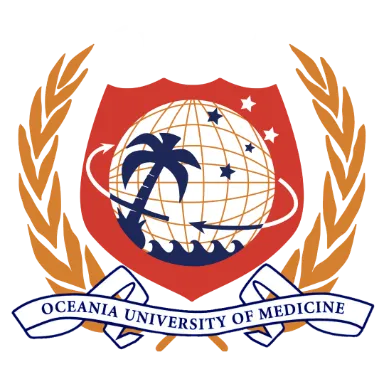According to a 2025 Health Canada report analyzing the health-care workforce, Canada is currently short 22,823 family physicians. Additionally, a 2023 research study published in the Canadian Medical Association Journal noted that one in five Canadians, approximately 6.5 million people, lack access to a family doctor. And those numbers can be higher in Canada’s rural and remote communities.

Disparities in Rural Healthcare Access
Since that report, the Canadian Health Workforce Network website said that, although rural Canadians make up 22 percent of the nation’s population, less than 10 percent of the country’s practicing physicians work in these communities. Overall, Canada averages one doctor per approximately 450 residents, a ratio that reaches one in 3,000 in some remote areas.
Ontario Expands Medical Training Capacity
To address the need, the Ontario government planned to add 160 undergraduate seats and 295 postgraduate positions to its medical schools over the next few years. In particular, the Northern Ontario School of Medicine (NOSM) will gain spots for 30 undergraduate students and 41 postgraduate students.
OUM: One Solution to the Rural Physician Shortage
The significance? NOSM works to “maximize the recruitment of students who have lived in Northern Ontario and/or students who have a strong interest in and aptitude for practicing medicine in northern urban, rural and remote communities.”
Associate Professor Nicolette McGuire, PhD, Associate Dean for Student Engagement of Oceania University of Medicine (OUM), based in the South Pacific, comments that:
“Medical educators know that students who are aligned to certain communities by birth or upbringing are more likely to return after medical training.” Dr. McGuire and her family previously lived in rural British Columbia (BC), and now reside in rural Ontario.
Global Shortage of Doctors
The shortage of doctors is not unique to one country or region. It is a global problem that is not new. In fact, OUM’s founding in 2002 stemmed from the need for more doctors in Samoa and other areas of the South Pacific. Over the years, its reach has expanded to students from more countries that need additional providers, while also bringing the study of Medicine to those with limited access to conventional medical schools.
Expanding Access to Medical Education Through a Hybrid Model
“Since long before online classes became the norm during COVID, our hybrid curriculum made medical school available to qualified individuals who simply could not relocate for four or five years in order to attend medical school,” says Associate Professor McGuire, who worked for the BC Ministry of Health and was a visiting scholar at UBC. “Many of our students have had medical school in the back of their mind since they were children, but life happens. Even though many of our students were accepted at conventional medical schools, their work and family responsibilities simply made that dream unattainable,” she adds.
Could this also make medical education accessible to more Canadians? Especially in underserved or remote communities far from medical school campuses?
“OUM’s pre-clinical curriculum is delivered via live, interactive virtual classrooms during the first two years, guiding students in their mastery of basic sciences and system-based material,” says Loubna Akhabir, PhD, Deputy Director of Pre-Clinical Education and Faculty, who lives in Vancouver, British Columbia. “Learning the basic sciences in this distance-learning environment during their first two years provides more individuals with the opportunity to study Medicine and ultimately puts more licensed physicians into the medical community,” she says.
OUM’s Global Rotations and Impact on Canadian Rural Communities
For hands-on training during clinical rotations, OUM has a broad network of hospitals and clinics in Australia, the US, and through its primary teaching facility in Apia, Samoa, Tupua Tamasese Meaole (TTM) Hospital. All three countries suffer from physician shortages and have added OUM graduates to their medical communities. An uptick in Admissions inquiries from prospective Canadian medical students indicates that the OUM curriculum model is appealing to those seeking to earn their MD.
“The first-hand experience I gained completing OUM clinical rotations in Samoa gave me a great foundation for rural and remote residency training, and now to work in rural Canada as an attending,” says Sonja Bruin, MBBS, CCFP-EM, OUM Class of 2014 and a Family Physician in rural Manitoba, Canada. “Working in a variety of different areas throughout Samoa’s islands, assisting with surgical procedures, performing deliveries, working in emergency, pediatrics, and internal medicine departments really allowed me to hone my skills and made me comfortable working in remote settings. The rewards of working in rural settings are many. The close community relationships you establish are rewarding, and the environment promotes autonomy and further enhancement of clinical skills.”
Making medical school available to students in rural settings, in addition to providing hands-on clinical training in those locations, encourages them to remain near their home communities, which typically need services, says Dr. McGuire.
OUM Canadian Faculty on the Rise
Just as global interest in distance learning education models has grown, more Canadians have expressed interest in Admissions, and more medical faculty have joined OUM’s ranks from Canada:
- Loubna Akhabir, PhD (Specialty: Experimental Medicine, UBC in Vancouver, BC)
- Kwadwo Osei Bonsu (PhD Candidate, Finishing his degree soon from the School of Pharmacy, Memorial University in St. John’s, Newfoundland)
- Rosa Eskandari, PhD (Specialty: Cellular and Molecular Biology, York University in Toronto, ON)
- Nicolette McGuire, PhD (Specialty: Reproductive Endocrinology, UC/Berkeley in California, USA, Undergraduate degree, University of Victoria in Victoria, BC)
- Elza Pollak-Christian, MD (Specialty: Pediatrics, Undergraduate degree, McGill University in Montreal, QC)
Looking Ahead: A Flexible Solution for a National Challenge
As Canada continues to face a critical shortage of family physicians—especially in rural and remote areas—innovative medical education models like OUM’s can play a vital role in expanding access and training doctors committed to serving underserved communities. With growing Canadian faculty involvement and increased interest from prospective students, OUM offers an impactful path to addressing one of Canada’s most pressing healthcare challenges.


